-
 Bitcoin
Bitcoin $83,309.8774
-1.88% -
 Ethereum
Ethereum $1,591.3660
-2.42% -
 Tether USDt
Tether USDt $0.9998
-0.01% -
 XRP
XRP $2.0864
-2.28% -
 BNB
BNB $580.9809
-0.68% -
 Solana
Solana $125.6682
-3.01% -
 USDC
USDC $0.9999
0.00% -
 TRON
TRON $0.2516
0.03% -
 Dogecoin
Dogecoin $0.1542
-3.08% -
 Cardano
Cardano $0.6142
-3.69% -
 UNUS SED LEO
UNUS SED LEO $9.3431
-0.92% -
 Chainlink
Chainlink $12.3641
-2.37% -
 Avalanche
Avalanche $18.8865
-5.31% -
 Stellar
Stellar $0.2358
-2.40% -
 Toncoin
Toncoin $2.8805
-0.91% -
 Shiba Inu
Shiba Inu $0.0...01169
-1.89% -
 Sui
Sui $2.1008
-4.00% -
 Hedera
Hedera $0.1574
-5.48% -
 Bitcoin Cash
Bitcoin Cash $318.9019
-1.04% -
 Litecoin
Litecoin $75.9077
-2.52% -
 Polkadot
Polkadot $3.5432
-3.69% -
 Dai
Dai $1.0000
0.00% -
 Bitget Token
Bitget Token $4.2538
-1.47% -
 Hyperliquid
Hyperliquid $15.1227
-5.40% -
 Ethena USDe
Ethena USDe $0.9991
0.00% -
 Pi
Pi $0.6199
-16.77% -
 Monero
Monero $217.3319
2.19% -
 Uniswap
Uniswap $5.2227
-2.58% -
 OKB
OKB $52.2436
1.28% -
 Pepe
Pepe $0.0...07082
-3.62%
How are blockchain transactions packaged into blocks?
Transactions on a blockchain are verified, pooled in a mempool, and then miners select and package them into blocks, solving puzzles to add them to the chain.
Apr 13, 2025 at 01:36 pm
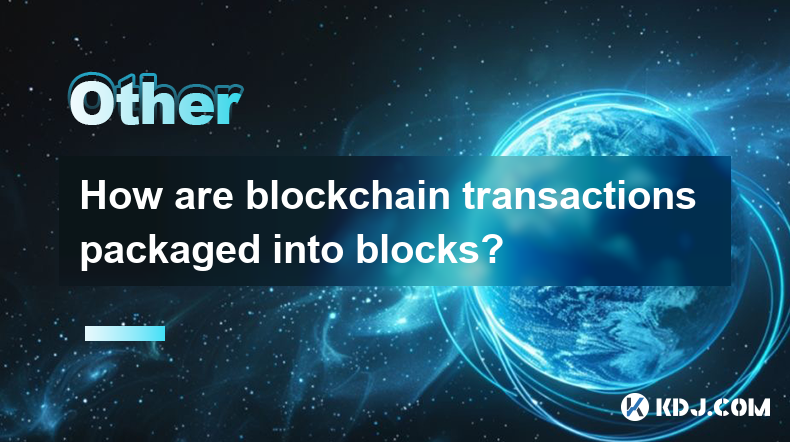
Introduction to Blockchain Transactions and Blocks
Blockchain technology is the backbone of cryptocurrencies like Bitcoin and Ethereum. At its core, a blockchain is a decentralized ledger of all transactions across a network. These transactions are grouped together into blocks, which are then linked together in a chain. Understanding how transactions are packaged into blocks is essential for grasping the mechanics of blockchain technology.
The Process of Transaction Collection
When a user initiates a transaction on a blockchain network, it is broadcast to all nodes (computers) on the network. These nodes verify the transaction to ensure it is valid. Validation involves checking the sender's signature, ensuring the sender has the necessary funds, and confirming that the transaction adheres to the network's rules.
Once verified, the transaction enters a memory pool, often referred to as the mempool. The mempool is a holding area where transactions wait to be included in a block. The transactions in the mempool are prioritized based on factors such as the transaction fee attached to them; higher fees often result in quicker inclusion in a block.
The Role of Miners in Block Creation
Miners play a crucial role in the blockchain ecosystem. They are responsible for collecting transactions from the mempool and forming them into a block. Miners compete to solve a complex mathematical puzzle, known as proof of work, which requires significant computational power. The first miner to solve the puzzle gets the right to add a new block to the blockchain and is rewarded with cryptocurrency.
Constructing a Block
When a miner decides to construct a block, they select transactions from the mempool. The miner typically chooses transactions that offer the highest fees to maximize their reward. The block must adhere to the blockchain's block size limit, which dictates the maximum amount of data that can be included in a single block.
In addition to the transactions, the block includes a block header. The block header contains metadata such as the block version, the hash of the previous block, and the timestamp. The Merkle root, a hash of all the transactions in the block, is also part of the block header. This structure ensures the integrity and continuity of the blockchain.
The Mining Process and Block Validation
Once the miner has constructed the block, they begin the process of mining. This involves finding a nonce (number used once) that, when combined with the block header and hashed, produces a hash that meets the network's difficulty target. This process is known as proof of work.
Upon finding a valid nonce, the miner broadcasts the new block to the network. Other nodes on the network then verify the block, ensuring that all transactions within it are valid and that the proof of work is correct. If the block is deemed valid, it is added to the blockchain, and the transactions within it are considered confirmed.
Finalizing the Block and Network Consensus
After a block is added to the blockchain, it is not immediately considered final. Most blockchain networks operate on a consensus mechanism that requires multiple confirmations before a block is considered immutable. For example, in Bitcoin, a transaction is typically considered secure after six confirmations, meaning six blocks have been added to the chain following the block containing the transaction.
This consensus mechanism ensures that all nodes on the network agree on the state of the blockchain, preventing issues like double-spending and ensuring the integrity of the ledger.
Frequently Asked Questions
Q: What happens if two miners find a valid block at the same time?
A: In the event of a block race, where two miners find a valid block simultaneously, the network may temporarily fork. Each miner's version of the block is broadcast to the network, and nodes will work on the first version they receive. Eventually, one version will gain more confirmations and become the accepted version, while the other is discarded.
Q: Can the block size limit be changed, and if so, how?
A: Yes, the block size limit can be changed through a hard fork, which requires consensus among the network's participants. A hard fork involves updating the blockchain's protocol, and if enough nodes agree to the change, it becomes part of the network's rules. This process can be contentious and often leads to the creation of new cryptocurrencies.
Q: How does the transaction fee affect the speed of transaction inclusion in a block?
A: Transaction fees play a significant role in determining how quickly a transaction is included in a block. Miners prioritize transactions with higher fees because they receive these fees as part of their reward. Therefore, a transaction with a higher fee is more likely to be included in the next block, leading to faster confirmation times.
Q: What is the significance of the Merkle root in a block?
A: The Merkle root is a crucial component of a block's structure. It is a hash that represents all the transactions within the block in a condensed form. By including the Merkle root in the block header, the blockchain ensures that any change to a transaction would alter the Merkle root, making it easy to detect tampering and ensuring the integrity of the block's contents.
Disclaimer:info@kdj.com
The information provided is not trading advice. kdj.com does not assume any responsibility for any investments made based on the information provided in this article. Cryptocurrencies are highly volatile and it is highly recommended that you invest with caution after thorough research!
If you believe that the content used on this website infringes your copyright, please contact us immediately (info@kdj.com) and we will delete it promptly.
- Movement Labs and the Movement Network Foundation have launched an independent investigation into recent market-making irregularities related to the MOVE token.
- 2025-04-16 09:15:12
- Shiba Inu (SHIB) burn rate saw an over 2000% hike, leading to the removal of 20.83 million tokens from circulation.
- 2025-04-16 09:15:12
- Securitize Acquires MG Stover's Fund Administration Business to Become the Largest Digital Asset Fund Administrator
- 2025-04-16 09:10:12
- Trump administration plans to present Congress with cuts to most funding for public media
- 2025-04-16 09:10:12
- XRP (XRP) Displays Promising Growth Potential as It Currently Trades Above $2.00 and the 21-week EMA
- 2025-04-16 09:05:13
- BYDFi Lists $KERNEL, the Governance Token of KernelDAO, with Spot Trading Now Live
- 2025-04-16 09:05:13
Related knowledge

Can the application of blockchain in supply chain finance bring benefits?
Apr 15,2025 at 04:00pm
Can the application of blockchain in supply chain finance bring benefits? The integration of blockchain technology into supply chain finance has garnered significant attention in the cryptocurrency and financial sectors. This article explores how blockchain can potentially revolutionize supply chain finance, detailing its benefits and providing a compre...
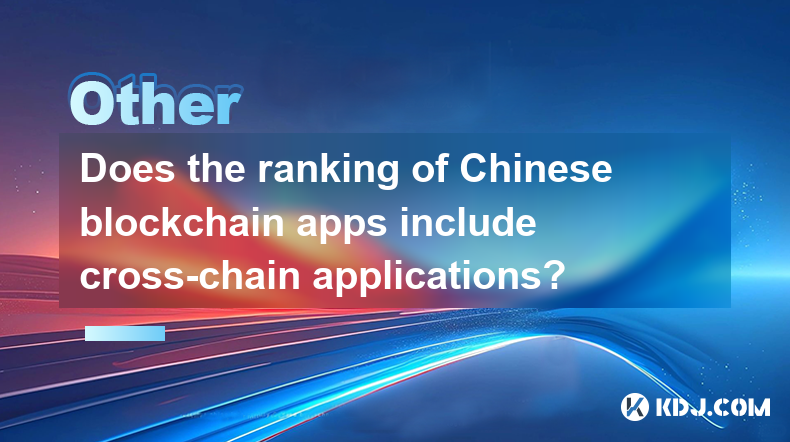
Does the ranking of Chinese blockchain apps include cross-chain applications?
Apr 14,2025 at 04:00pm
The ranking of Chinese blockchain apps is a comprehensive evaluation that takes into account various aspects such as user base, transaction volume, and technological innovation. A pertinent question arises regarding whether these rankings include cross-chain applications. Cross-chain applications, which allow different blockchain networks to interact an...
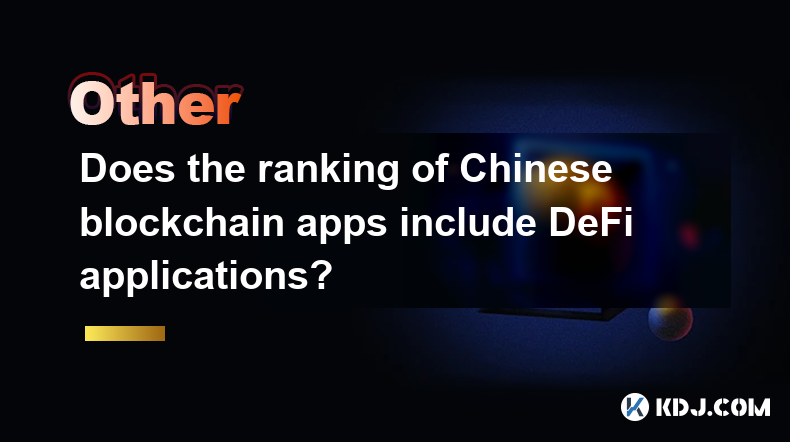
Does the ranking of Chinese blockchain apps include DeFi applications?
Apr 15,2025 at 06:57am
The ranking of Chinese blockchain apps is a comprehensive list that showcases the most popular and influential applications within the cryptocurrency ecosystem. One question that often arises is whether these rankings include DeFi applications. To answer this, we need to delve into the specifics of how these rankings are compiled and what types of appli...
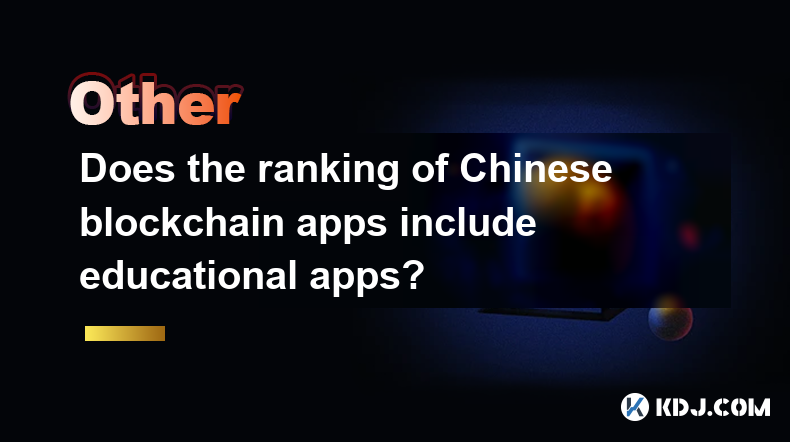
Does the ranking of Chinese blockchain apps include educational apps?
Apr 16,2025 at 03:35am
The ranking of Chinese blockchain apps often includes a variety of categories, from finance and gaming to social networking and beyond. One question that frequently arises is whether these rankings include educational apps. To address this, we need to delve into the specifics of how blockchain apps are categorized and ranked in China, and whether educat...
Does the ranking of Chinese blockchain apps include enterprise-level applications?
Apr 15,2025 at 06:42am
The ranking of Chinese blockchain apps often includes a variety of applications, ranging from consumer-focused to enterprise-level solutions. Understanding the scope and criteria for these rankings is essential to determine if enterprise-level applications are included. This article delves into the specifics of how Chinese blockchain app rankings are co...
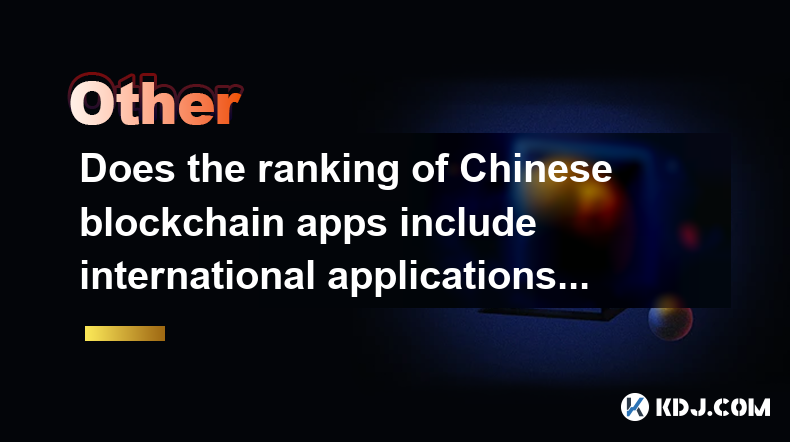
Does the ranking of Chinese blockchain apps include international applications?
Apr 16,2025 at 04:07am
The ranking of Chinese blockchain apps primarily focuses on applications developed and predominantly used within China. However, the question of whether these rankings include international applications is an intriguing one that warrants a detailed exploration. In this article, we will delve into the criteria used for ranking Chinese blockchain apps, th...

Can the application of blockchain in supply chain finance bring benefits?
Apr 15,2025 at 04:00pm
Can the application of blockchain in supply chain finance bring benefits? The integration of blockchain technology into supply chain finance has garnered significant attention in the cryptocurrency and financial sectors. This article explores how blockchain can potentially revolutionize supply chain finance, detailing its benefits and providing a compre...

Does the ranking of Chinese blockchain apps include cross-chain applications?
Apr 14,2025 at 04:00pm
The ranking of Chinese blockchain apps is a comprehensive evaluation that takes into account various aspects such as user base, transaction volume, and technological innovation. A pertinent question arises regarding whether these rankings include cross-chain applications. Cross-chain applications, which allow different blockchain networks to interact an...

Does the ranking of Chinese blockchain apps include DeFi applications?
Apr 15,2025 at 06:57am
The ranking of Chinese blockchain apps is a comprehensive list that showcases the most popular and influential applications within the cryptocurrency ecosystem. One question that often arises is whether these rankings include DeFi applications. To answer this, we need to delve into the specifics of how these rankings are compiled and what types of appli...

Does the ranking of Chinese blockchain apps include educational apps?
Apr 16,2025 at 03:35am
The ranking of Chinese blockchain apps often includes a variety of categories, from finance and gaming to social networking and beyond. One question that frequently arises is whether these rankings include educational apps. To address this, we need to delve into the specifics of how blockchain apps are categorized and ranked in China, and whether educat...

Does the ranking of Chinese blockchain apps include enterprise-level applications?
Apr 15,2025 at 06:42am
The ranking of Chinese blockchain apps often includes a variety of applications, ranging from consumer-focused to enterprise-level solutions. Understanding the scope and criteria for these rankings is essential to determine if enterprise-level applications are included. This article delves into the specifics of how Chinese blockchain app rankings are co...

Does the ranking of Chinese blockchain apps include international applications?
Apr 16,2025 at 04:07am
The ranking of Chinese blockchain apps primarily focuses on applications developed and predominantly used within China. However, the question of whether these rankings include international applications is an intriguing one that warrants a detailed exploration. In this article, we will delve into the criteria used for ranking Chinese blockchain apps, th...
See all articles























































































